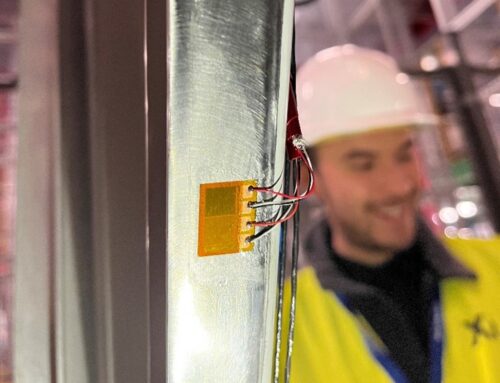Innovation has always been difficult. It takes time, and, historically, expensive trial and error. Sir James Dyson is renowned for his perseverance in his quest to develop a bag-fee vacuum cleaner. It took 15 years and 5,127 prototypes to launch the DC01 in 1993. Staying ahead of your competition in the technical space is a relentless journey.
A great example of this is Formula 1. Watching a Grand Prix is a stark assessment of both human and machine. The vast engineering teams are desperately trying to improve their technology relative to their competition. In contrast to slower product market launches, Formula 1 teams are benchmarked against the competition most weekends and the clock never lies. At each race, the teams bring effectively their latest prototype car to pit against their competitors. It is a never-ending development cycle utilising the best technology to gain an advantage. So, when you bring your product to market what are you doing to ensure that you remain ahead of the competition? What are you doing to mitigate technical risk?
What is exactly a digital twin?
A digital twin is a Multiphysics model that is tethered to the real world with some form of data transfer. Data may be periodic, not necessarily restrained to real-time. Essentially, it’s a virtual model tethered to the real-world using sensor data pulling. The time updating requirement is the main difference between a digital twin and traditional modelling. A digital twin is the link between the real and virtual world. In the past, the term digital twin was first used by the construction industry to represent a beam model that wasn’t tethered to real-world data or cover Multiphysics. Nowadays it wouldn’t have been classed as a digital twin.
Digital Twin reinventing innovation
In recent years, Digital Twin Technology has developed in leaps and bounds, and it is rapidly making product development faster and more cost-effective. Historically we would run simulations on supercomputers. Today cheap computing power accessible over the cloud has made advanced simulation much more affordable and available to the masses. Digital Twins are reinventing innovation across all technical areas from faster and cheaper medical drugs to connected and conscious cities. Digital replicas are changing both the face and pace of innovation. It comes as no surprise that Formula 1 teams use a digital twin of their race cars. Real-time information is gathered from the racing cars which offer diagnostic and predictive analysis. Digital twin technology is not only used for cutting-edge racing technology. It is also accessible to most industries. Getting involved with Digital Twin technology can be surprisingly easy and it can provide a convenient solution to de-risking your products while reducing development costs. Digital twins are, and will continue to, change the face of innovation.
Real-time data – continuous assessment & evaluation
Traditionally complicated technical products were only able to be assessed twice in their lifecycle. Firstly, when they were created and secondly when they were broken down at the end of their life. We now live in a world of real-time data and sensors on practically anything. If you are wearing a smartwatch there are sensors on you. If you don’t, you’ll be carrying sensors on your phone around with you. Digital twin technology uses cloud-connected sensors embedded in machines to upload real-time operational data, producing up-to-date virtual simulations of real-world machines.
Digital twin data technology is already deployed to monitor the operational health and functionality of some of the world’s most complex and mission-critical machines. Digital twin versions of jet engines, locomotives and gas turbines are tracking wear and tear on the machinery, maximizing operational efficiency and predicting when these machines will need maintenance – often before they break down.
Tesla has already taken digital twins to the next level. Each car produced has a digital twin. Sensors on the real-world vehicle send data to the digital twin. If a problem occurs on the vehicle you will be prompted to download a software update to solve it. The understanding of the product lifecycle provides endless information that can improve a product’s performance and feed into future product generations.

Getting to market quicker, at a lower cost with reduced risk
Faster, cheaper, prototyping can be achieved with a digital twin. Digital twins can dramatically reduce the need for expensive tests and physical prototypes, lowering the cost and increasing the speed of innovation. Applied to a system or process can eliminate the need for physical experimentation while optimising performance under different conditions. Digital twins or virtual prototypes increase the efficiency of product development as the building of testing and prototypes in the physical environment takes not only time but an investment.
When do you need to switch to a digital twin?
If your product has numerous variables and multiple iterations needed for optimisation, then a digital twin is essential. Gone are the days of just CAD/CAM or FEA. Nowadays a digital twin can be built with all the appropriate physics relevant to your product by using advanced Multiphysics simulation. Whether it be electromagnetics, acoustics, chemical reactions, fluid flow or anything that happens in the real world – the virtual world can simulate it. When your virtual prototype is in place, then you can perform rapid virtual trial and error.
How Xi can help you built a digital twin model

At Xi, we are experts in producing Multiphysics models which are based on all the relevant physics. Through the combination of our simulation and measurement work, we have long understood the benefits of rooting the virtual world with real-world data. There are three stages we use to produce a digital twin model:
- Build the model
- Test sensitivities to different variables
- Produce an efficient model which can be used as your digital twin
At Xi, we often produce an online version of the model which allows your team to get the full value and comprehension. These online models are linked to real-world data to function as your digital twin. To learn more about the process and how we can help you and your team with your digital twin project please contact our team.
Pushing innovation to its limits
There are certain times that you just can’t test things in the real world. It may be unethical to run experimental tests on somebody’s heart, or it simply might be the case it is impossible to put a sensor on a machine that doesn’t fundamentally change the performance of a machine. Large scale experiments over entire cities may not be financially realisable and a virtual version is the only way to test your theory, product or push innovation to its very limit. So, the digital twin is here to stay. Looking into the future all sorts of products and machines will have digital twins with a connection to the real world. People envisage individual human digital twins that GP’s can access, and custom medicines can be tested in the virtual world before getting a tablet in your hand. As engineers, we are more accustomed to a slightly more mechanical digital twin, albeit some of our work on wearable technology is taking us somewhat closer to home. Whatever you think the future will bring -it is getting here faster with the digital age and if you don’t join in your competition will take the chequered flag way before you.





